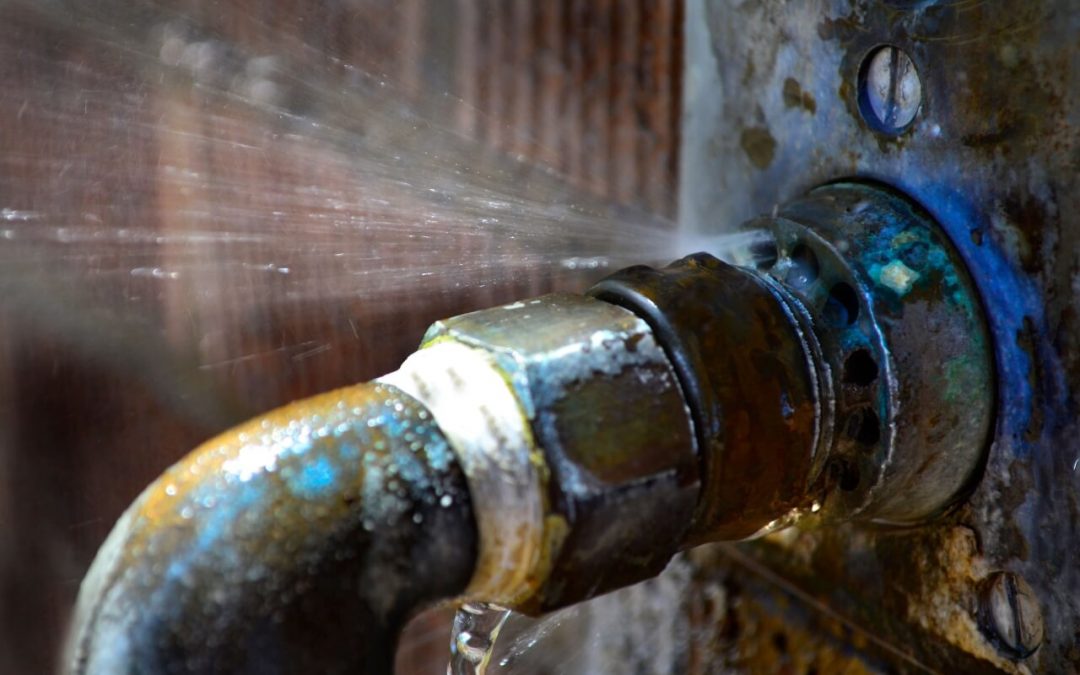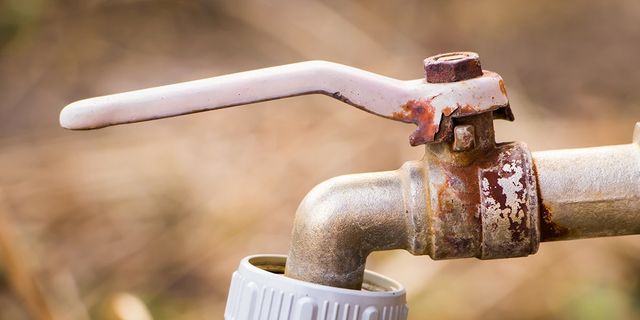What are your opinions about Plumbing Issues in Older Properties and How to Fix Them?

Older homes often include charm, personality, and history, but they can also bring a host of plumbing issues. Whether you're dealing with maturing pipelines, low tide stress, or leaks, recognizing exactly how to deal with these usual issues is essential to keeping a risk-free and useful home. In this guide, we'll discover the common pipes challenges encountered by older homes and offer useful remedies to keep your pipes in top form.
Understanding Typical Pipes Issues
Aging Pipelines
One of the most usual issues in older homes is maturing pipes. Relying on the era in which your home was developed, the pipelines might be made from products that have actually weakened over time, such as galvanized steel, cast iron, and even lead. These products can corrode, end up being weak, or develop leakages, resulting in water damages and potential carcinogen.
Water Quality Screening
Older pipes can affect the high quality of your water. Conduct a water quality examination to look for contaminants such as lead, rust, or various other contaminations that may be presented by aging pipes.
Solutions for Typical Plumbing Issues
Changing Aging Pipes
If your home has old, deteriorating pipes, consider changing them with modern-day materials like copper or PEX. This can be a considerable financial investment, but it will stop future concerns and boost the safety and reliability of your plumbing system.
Dealing With Low Water Pressure
To repair low water pressure, begin by cleaning or replacing old components and removing mineral buildup in the pipes. If the problem persists, it may be required to change areas of rusty pipelines.
Fixing and Changing Leaking Pipes
For little leakages, you can make use of pipeline clamps or epoxy putty as a short-lived solution. Nonetheless, it's ideal to change dripping pipelines totally to stay clear of more damages.
Updating Fixtures
Upgrading old components to contemporary, water-efficient designs can improve your home's plumbing performance and lower water intake. Look for components with the WaterSense tag for the very best effectiveness.
Taking Care Of Pipe Corrosion
If your pipes are corroded, replacing them with corrosion-resistant products like copper, PVC, or PEX is the most effective option. Routine evaluations and water quality maintenance can help prevent further deterioration.
Low Tide Pressure
If you're experiencing low water stress, maybe because of mineral deposits, corrosion inside the pipes, or old components that are no longer functioning efficiently. This can be a significant trouble, particularly in areas like showers and sinks.
Leaking Pipes
Leaks are another regular issue in older homes, frequently triggered by corroded or damaged pipelines. Even tiny leaks can bring about substantial water damages, mold development, and boosted water costs if not addressed immediately.
Outdated Fixtures
Outdated pipes fixtures such as taps, toilets, and showerheads not only look old however might additionally be less reliable, prone to leakages, or incompatible with modern pipes requirements.
Pipeline Rust
Corrosion is a typical problem in older pipelines, particularly those made from galvanized steel or actors iron. Corroded pipelines can restrict water circulation, trigger discoloration, and eventually bring about leaks or pipe ruptureds.
Evaluating the Problem of Your Pipes
Examining Noticeable Pipes
Begin by inspecting any kind of visible pipelines in your house, such as those in basements, crawl spaces, or under sinks. Seek indicators of rust, leaks, or corrosion, which can suggest underlying issues.
Looking for Leakages
Look for leaks by checking locations around faucets, commodes, and under sinks. You can also monitor your water meter prior to and after a period of no water make use of to detect surprise leakages.
When to Call an Expert
While some pipes concerns can be taken care of with DIY options, there are times when it's ideal to employ a professional. If you're handling significant leaks, substantial deterioration, or are uncertain concerning the condition of your pipes, a qualified plumbing can supply experienced assessment and repair work.
Preventive Upkeep Tips
Regular Assessments
Regularly inspect your plumbing system for indications of wear and tear. Catching concerns early can prevent pricey fixings down the line.
Water Stress Guideline
Guarantee your water pressure is within the advised variety to prevent stressing your pipes and fixtures. A plumbing can set up a pressure regulatory authority if required.
Water Quality Maintenance
Install water filters or softeners if your water high quality is poor. This can secure your pipelines and fixtures from damage brought on by difficult water or pollutants.
Positive Pipe Replacement
If your home has very old pipes, think about aggressive replacement before major problems develop. This can conserve you from emergency repair work and water damages.
Verdict
Dealing with pipes problems in older homes needs a mix of caution, precautionary maintenance, and timely upgrades. By understanding the typical difficulties and understanding when to seek specialist assistance, you can ensure your pipes system continues to be practical and trustworthy for many years ahead.
Common Plumbing Issues in Older Homes and How to Fix Them
Owning an older home in Australia comes with its unique charm and a set of challenges, especially when it comes to plumbing. The Sunshine Coast has many older properties that can harbour plumbing problems that aren t just inconvenient but potentially costly. Here s a look at some common plumbing issues in older homes and expert advice on how to handle them.
Outdated Piping Materials
Many older homes were built with galvanised steel, cast iron, or even lead pipes, materials that are far from ideal by today s standards. Galvanised pipes are prone to corrosion and clogging, while lead pipes pose serious health risks.
How to Fix:
Replacing old pipes is a job for a professional. Upgrading to copper or PVC piping not only enhances water quality and flow but also increases the property s safety and value. If you suspect your home has outdated materials, a licensed plumber can conduct a thorough inspection and recommend the best course of action.
Corrosion and Pipe Degradation
Over time, exposure to water and minerals can cause pipes to corrode, leading to leaks, bursts, and water contamination. Corrosion is especially common in homes over 50 years old.
How to Fix:
Regular inspections can catch early signs of corrosion. If corrosion is found, the affected section of piping often needs to be replaced. For homes with extensive corrosion, a complete plumbing overhaul might be necessary. It s crucial to consult with a plumbing expert to understand the extent of the issue.
Tree Root Intrusion
Older neighbourhoods usually have mature trees whose roots can intrude into pipe lines, causing blockages or damage. This is particularly problematic for sewer lines, where roots seek out water sources.
How to Fix:
A plumber can use a specialised camera to inspect sewer lines for root intrusion. If roots are a problem, methods like root cutting or hydro-jetting can clear the obstruction. In severe cases, part of the pipe may need replacing. Consider root barriers around the piping to prevent future issues.
Inadequate Water Pressure
Low water pressure in older homes can be due to various factors, including corroded water lines, sediment build-up in pipes, or outdated fixtures.
How to Fix:
First, check if the low pressure is isolated to one area or throughout the house. Replacing old fixtures can sometimes resolve the issue. However, if the problem is more widespread, it might be due to sediment or corrosion. Flushing the system or replacing the affected pipes usually restores normal pressure. Again, a professional assessment is advisable.
Outdated Fixtures
Older homes often feature fixtures that are not only visually dated but functionally inefficient. This includes everything from toilets and taps to showerheads and washing machine hoses.
How to Fix:
Updating these fixtures can improve both water efficiency and the aesthetic appeal of your home. Modern fixtures are designed to conserve water, which can significantly reduce your water bill and lessen your environmental impact.
Conclusion
Maintaining the plumbing in an older home requires a proactive approach. Regular checks and updates are key to preserving these beautiful properties. If you re facing plumbing issues in your older home, it s best to call on experienced professionals like Green & Gold Plumbing & Gas. With the right expertise, even the most daunting plumbing problems can be resolved, ensuring that your home s character is maintained while its functionality is enhanced.
https://gandgplumbing.com.au/common-plumbing-issues-in-older-homes-and-how-to-fix-them/

As a devoted reader about Plumbing Problems In Old Homes, I figured sharing that excerpt was essential. If you appreciated our blog post plz don't forget to share it. Thank you for your time spent reading it.
Detail